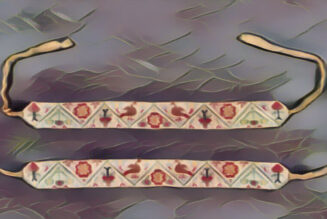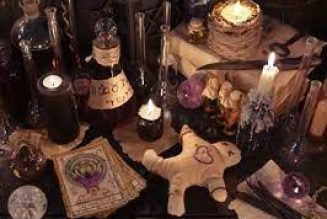Capsules
Use all natural gelatin capsules when using powdered herbs. Many herbs have a bitter taste, this often is the medicinal value in the herb, but makes teas unpleasant. Capsules can be used to take herbs quickly and pleasantly.
Decoction
This is a preparation made by boiling herbal substances in water for a considerable period of time, usually about 30 minutes. Hard materials such as pieces of roots, bark, seeds, etc. are usually prepared in this way as they require longer subjection to heat in order to extract their active principles. Generally 1 ounce of the botanical substance is placed in 1 pint of cold water. the container is then covered and the solution allowed to boil for one-half hour, after which it is then strained, cooled and ready for use. However, since some of the water boils away, may herbalists prefer to use 1 1\2 pints of water so that when the boiling period has ended, the decoction measures approximately 1 pint.
Fomentation
Dip cloth in the infusion or decoction, wring it out, and apply locally.
Infusions
Infusions are frequently called teas, and are generally prepared in the amount of 1 ounce of the plant substance to 1 pint of water. However, sometimes plants contain very active principles, and little less herb is sufficient. Bring the water to a boil and pour over the herb, in a covered container, let the solution steep (stand) for 15 minutes (stirring occasionally). When the steeping has ended, strain the infusion and use. Infusions can be prepared by placing 1 teaspoon of the plant substance in a cup and pouring boiling water over it. It is then covered with a saucer and allowed to steep for 15 minutes, after this, it is strained and used. Sometimes a little honey is added to make the infusion more palatable. INFUSIONS ARE NEVER ALLOWED TO BOIL.
Ointments or Salve
An easy method to make a salve or ointment is to take approximately eight parts of vaseline or vegetable shortening and two parts of the herb you are wanting to use. Heat on low heat and stir occasionally for 20 minutes. Let cool, strain into glass or porcelain container with a wide opening, for easy assess.
Poultices
Poultices are used to apply moist heat to draw or soothe. Fresh leaves of the particular herb called for is bruised and steeped in boiling water (only enough to moisten) for a short time. The leaves are then spread between two pieces of cloth and applied as hot as possible, then, covered with a dry cloth to retain heat. A second poultice is prepared while the first one is still being used. It is to replace the first poultice the moment it begins to noticeably lose heat. The powdered herb of a plant may be substituted for the fresh leaves. Use enough of the powdered herb to make a paste. The paste is then spread between two pieces of cloth, applied and renewed, several times.
Syrup
Boil tea for 20 minutes, add 1 oz. glycerin, and seal up in bottles, as you would fruit. The small juice bottles bought at the `quick stops’ are just the right size for this.
Tincture
These are spirit preparations made with pure or diluted alcohol (not rubbing alcohol), brandy, vodka, or gin is the best. Tinctures are used because some herbs will not yield their properties to water alone, or may be rendered useless bay application of heat. In other instances, and herb will more readily impart it’s active principles when prepared as a tincture. Usually, 4 ounces of water and 12 ounces of alcohol is mixed with 1 ounce of the powdered her. The mixture is allowed to steep (stand) for 2 weeks, the bottle should be shaken thoroughly every night. After the 2 weeks are up, the clear liquid is strained off carefully, so as not to disturb the sediment. Strain and discard the sediment. The tincture is then bottled for use.
Making Herbal Salves
Herbal salves are fun to make and use. This article will give you the general instructions for making any herb into a salve, then provide you with a recipe for our favorite, comfrey salve. Don’t be afraid to experiment with the process. I’ve had a lot of fun trying different herbs and ingredients. If you come up with a good recipe yourself put it in the database for the rest of us.
Step 1: Selection of Herb(s)
The first step in making an herbal salve is to decide which herb or herbs you want to use in your salve. The herb(s), of course, will be selected based on what you want the salve to do. My favorite herb to use in a salve is comfrey because of its tissue healing nature. Other herbs that might be used in salves include: calendula, yarrow, gum weed, yellow dock, golden seal, burdock, pau d`arco and so forth. The herbs may be used fresh or dry. The dry herbs are easier to use, however, the fresh herbs may have healing qualities missing in the dry herbs.
Step 2: Making an Herbal Oil
Once you have the selected herb(s) you will need to process them into an herbal oil. This is done by extracting the chosen herb or herbs in a high quality oil. Because of its healing properties I usually use pure olive oil, although other oils will work as well. Even lard could be used in a pinch. The formula for this is very easy to remember. Use about one to one and a half pounds of dried herbs per gallon of oil. Adjust this ratio downward depending on how much herbal oil (and eventually) herbal salve you want to mak (1/2 gallon oil equals ½ to ¾ pound of herbs, and so forth). For fresh herbs, simply stuff as much of the fresh herb into the oil as you can and still have the oil cover th herbs. Place the oil and the herbs in a large stainless steel or enamal container (Never use aluminum, teflon or cast iron) and put the container in the oven. Now, set the oven to the lowest temperature setting possible (usually around 100 to 120 degrees) and leave the herbs in the oven to extract in the oil. When using dry herbs you should leave them in the oven for at least 12 hours. You can leave them up to 24 if you like. When extracting fresh herbs, you will need to leave them in for at least 24 to 36 hours. The fresh herbs must remain in the oven until the herbs are crisp. This is to ensure that all the moisture in the fresh herbs has evaporated out of the oil. If the water from the fresh plant juices is mixed in you salve, it will spoil (go rancid) very rapidly. I know, I did it once. To speed the evaporation, you may want to prop the oven door open slightly with a wooden spoon. After the herb has been extracted in the oil, you will need to remove it from the oven and strain it. It is best to strain the oil while it is still warm, but let it cool long enough that it won`t burn your hands to handle it. Strain the oil through several layers of cheese cloth if you are using large pieces of herb. Powders will need to be strained through a fine cloth (a piece of cotten sheet for example). Once you have strained most of the oil out of herbs you can let the remainder drip out by suspending the herb material in your cheesecloth or cloth over a container to catch the drips. You now have an herbal oil. This oil can be used just as it is as a wonderful topical healing agent, but it is somewhat difficult to use because it is so runny that it doesn`t stay in place ver well. Hence, it is best to harden it slightly into a salve.
Step 3: Hardening the Oil
To harden the oil you will need some beeswax (in a pinch one could sustitute pariffin for beeswax). You will need at least ½ pound (8 oz) of wax per gallon of olive oil. Eight ounces of wax per gallon makes a soft salve. If you want a harder salve add a couple more ounces of wax. Place the wax in a clean, empty tin can and place the tin can in a pan of water on the stove. This is a makeship double boiler that you will use to melt the wax. The tin can saves you from having to clean wax out of your cooking pans. Bring the water in the pan to a slow boil and simmer the can of wax until the wax is melted. Meanwhile, you should also warm the oil. If you try mixing hot wax with cool or cold herbal oil, the wax will not blend smoothly and evenly, but will tend to get lumpy, like bad gravy. When the oil is warm and the wax is melted, pour the wax into the oil and begin beating the oil with a hand-powered egg beater. Do not use an electric beater, it will whip too much air into the salve. You will need to gentle beat the salve, peridocially scrapping the sides until the salve begins to cool to ensure that the oil and wax blend smoothly. To hasten the cooling process, you can set the pan into a sink full of cold water. (Be sure to scrape the sides, as the salve will tend to cool around the outside edges first.
Step 4: Add Final Ingredients
As the salve begins to cool you can add other ingredients which might have been destroyed by heat or which may enhance the salve`s healing ability. Such ingredients might include: volatile oils (for fragrance and preservative qualities), vitamin E (for healing and preservative qualities), vitamin A & D (or cod liver oil for the healing qualities of these vitamins), glycerine and/or lanolin (for their soothing and healing properties) and so forth.
Step 5: Put in Containers
When the salve starts the thicken it is time to pour it into small jars and containers for easy use. Don’t worry if the salve is still quite runny when it is poured. It will thicken (like wax does) as it cools. Clean up your pots and tools with lots of hot soapy water. That’s all there is to it.
A Recipe for Comfrey Salve
Now, here’s my recipe for comfrey salve (at least my latest version of it; I keep modifying it each time I make it). Use the following to make the oil base using the directions indicated above.
- 1 pound comfrey leaves
- ¼ pound calendula herb
- 1 gallon virgin olive oil
Add 8 ounces of melted beeswax to the strained and heated oil and beat as it cools as described above. When the oil and beeswax mixture has barely started to thicken add the following:
- 8 ounces lanolin
- ½ cup glycerine
- ½ ounce peppermint oil
This makes a wonderful salve for minor injuries like cuts, scrapes, bruises, diaper rash, burns and so forth.























